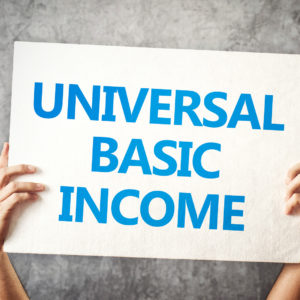With the madness of the midterm elections behind us, the sprint toward the 2020 presidential election has begun. And some Democrats eyeing to unseat President Trump have dusted off an old idea to drum up support: a universal basic income policy, or UBI for short.
But what exactly is a UBI?
Generally painted as a way to shrink income inequality, a UBI is a government guaranteed minimum income for everyone — regardless of employment status. In other words, a program that provides free money. And while the specifics of the policy sometimes differ, the gist stays the same — it’s the most radical bloating of the welfare state since … well, ever.
While a policy like this may sound desirable in a campaign stump speech, in practice, it would have major consequences — including tax hikes that would be necessary to pay for the program and reduced work motivation, leading to less productivity.
Two Democratic frontrunners for 2020 are positioning themselves as champions of UBI-light policies — Kamala Harris and Cory Booker. They’re not exactly treading new ground. During the last election cycle, Bernie Sanders flirted with the concept, and has been more vocal about supporting UBI since 2016. Hillary Clinton’s book “What Happened” reveals that she would have liked to make UBI a larger part of her campaign.
While politicians often try to package UBI as a fresh new idea, the concept has been tried before. And unsurprisingly, it hasn’t worked.
In 2017, Finland experimented with a pilot program, putting 2,000 randomly chosen Finns on UBI, with the government providing a monthly check of 560 euros. But earlier this year, Finland abruptly decided to not extend its experiment.
Although the Finnish government doesn’t plan to release the findings until the end of 2019, some point to the program’s price tag as one of the main reasons it was doomed to fail from the start.
In fact, according to an independent analysis, Finland would have been forced to raise its income tax by nearly 30 percent to keep such a program alive. And when the personal income tax rate in Finland already maxes out at more than 50 percent, another increase would likely prove unsustainable.
Finland is not the only example where the flaws of UBI have been exposed.
In Canada, Ontario’s government decided to launch a UBI experiment in July 2017. But a few months ago, they decided to end the experiment — two years ahead of schedule. Upon the conclusion of the trial, a Canadian official called the experiment “quite expensive” and said “it was certainly not going to be sustainable.”
Even in the United States, a form of UBI has already been tested. From 1968 to 1980, the federal government ran a “negative income tax” experiment — meaning that a minimum income is guaranteed, but phased out as earnings increase. The goal was to incentivize work, but the policy ended up encouraging just the opposite.
The program resulted in a drop in working hours across the board. Most strikingly, working hours fell by 43 percent for single men not responsible for a family. To make matters worse, stints of unemployment were prolonged — meaning that after someone lost a job, it took them longer to begin a new one.
Democrats may attempt to use basic income program proposals to help build support in the 2020 presidential election, but they better hope Americans don’t venture beyond their elevator pitch. Because after examining UBI programs of the past, it’s clear the policies lack feasibility and weaken economic prowess.
If politicians want to gain the support of the American electorate, they should focus on policies that build off the economic success of the past year rather than undermine it.

